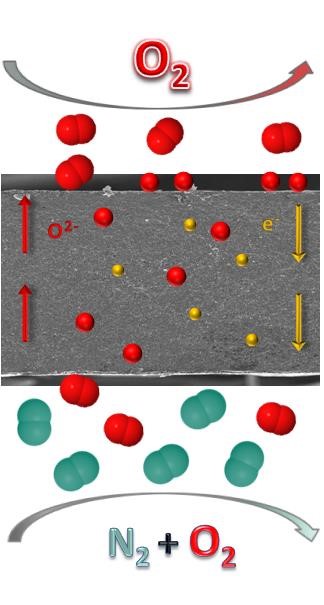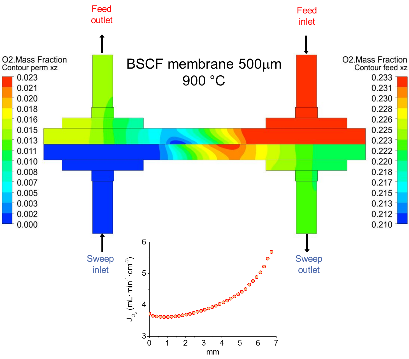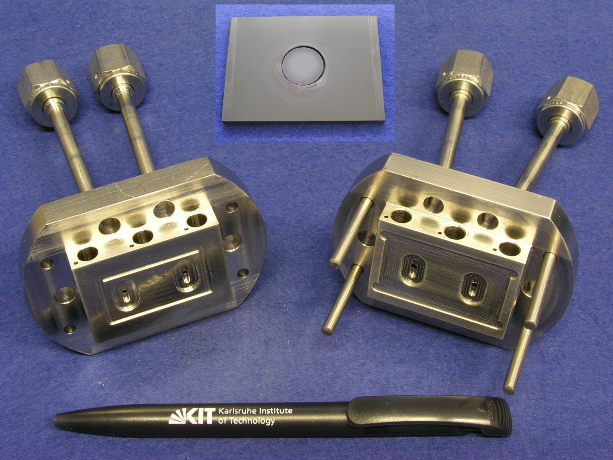Gasseparation membranes
- contact:
- Partner:
German Aerospace Center (DLR), Stuttgart, Germany
Research Center Jülich (FZJ), Jülich, Germany
Process intensification aims to increase the production capacity, to decrease the energy consumption and to reduce wastes with the subsequent reduction of the production costs. Development of new equipment and processes is needed in order to reach these goals.
In this context, integration of catalytic membrane reactors employing mixed ionic (oxygen ion or proton)-electronic conductors (MIEC) based separation membranes or metallic membranes like Pd membranes for hydrogen separation could allow to yield more environmentally safe and economically efficient processes. These membrane reactors allow the controlled removal or feeding of O2 or H2, and consequently enable to surpass equilibrium conversion or increase product selectivity in reactions such as oxidative dehydrogenation of hydrocarbons or water gas shift, respectively. Some of the needed targets for this kind of membranes are listed: (a) high permeation fluxes; (b) low cost; (c) stability and durability and (d) low fabrication costs.1
Besides the improvement of the permeation fluxes by tailoring the materials, they can be also improved by decreasing the membrane thickness, using supports with engineered porosity, and/or applying catalytic coatings for targeted surface reactions.
Main aspects of our work are the development of a compact metallic reactor for the integration of ceramic membranes as well as the simulation of gas transport through multi layer membranes.
The development of the compact metallic reactors includes several steps: (a) development and integration of a membrane holder for thick membranes, including the development of the sealing process; (b) development of a framework containing a porous metallic support and the manufacture of thin membranes by sputtering; (c) application as membrane catalytic reactors with the previous development of the adequate catalysts.



Publications:
Escolastico, S., Schygulla, U., Haas-Santo, K., Schulze-Küppers, F., Baumann, S., Marcano, D., Vassen, R., Dittmeyer, R, Integration of Ceramic Membranes in Compact Metallic Reactors, 13th International Conference on Catalysis in Membrane Reactors, Houston, USA, 10-13 July 2017
Li, H., Haas-Santo, K., Schygulla, U., Dittmeyer, R., Inorganic microporous membranes for H₂ and CO₂ separation-Review of experimental and modeling progress, Chemical Engineering Science, 127 (2015) 401-417 DOI: 10.1016/j.ces.2015.01.022
H. Li, U. Schygulla, J. Hoffmann, P. Niehoff, K. Haas-Santo, R. Dittmeyer, Experimental and modeling study of gas transport through composite ceramic membranes, Chem. Eng. Sci., 108 (2014) 94-102.
Wenjin Ding, Michael Klumpp, Hui Li, Ulrich Schygulla, Peter Pfeifer, Wilhelm Schwieger, Katja Haas-Santo, and Roland Dittmeyer, Investigation of High-Temperature and High-Pressure Gas Adsorption in Zeolite H-ZSM-5 via the Langatate Crystal Microbalance: CO2, H2O, Methanol, and Dimethyl Ether J. Phys. Chem. C, 2015, 119 (41), 23478–23485 DOI: 10.1021/acs.jpcc.5b06591